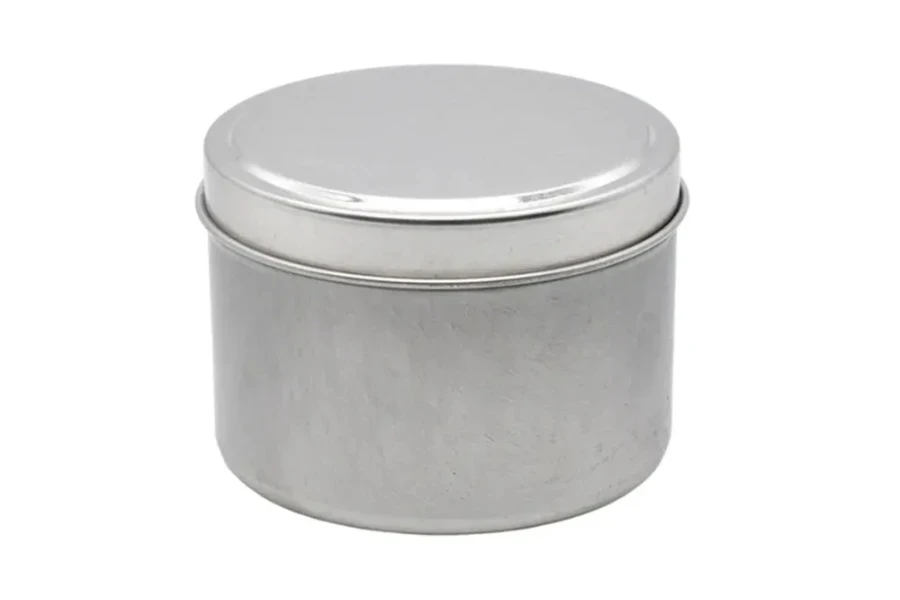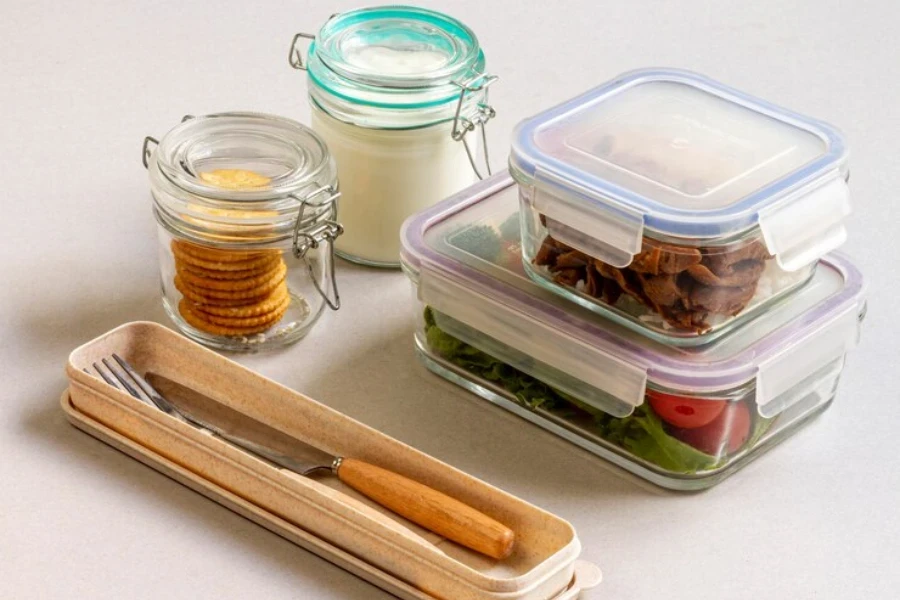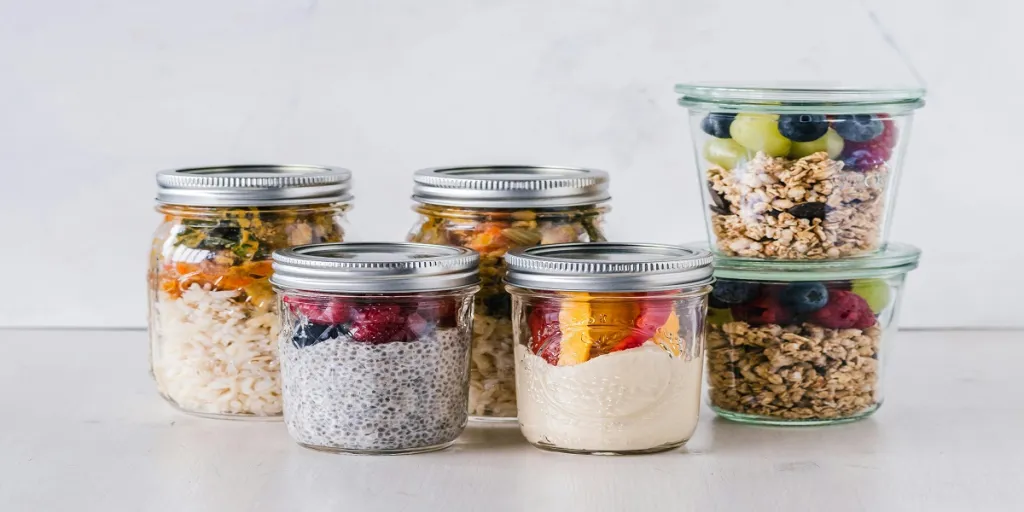Stocking up on food can quickly turn into a messy situation for consumers. Imagine canned foods, drink bottles, and all kinds of food items strewn everywhere without organization—a truly uncomfortable sight to behold.
Hence, consumers who are faced with the above issue usually turn to food storage containers to help save space in their cabinets and fridges, providing a more aesthetic organization that can easily elevate any kitchen space.
However, food storage containers have so many options that finding the ideal ones could be a literal chore. But that shouldn’t stop businesses from profiting from this booming market.
This article will highlight seven food storage container trends that will leave kitchens looking amazing and business pockets full in 2024.
Table of Contents
An overview of the food storage container market
6 food storage containers for perfectly organized kitchens & refrigerators
Closing up
An overview of the food storage container market
Experts set the global food storage container market’s value at US $148 billion in 2022. While already impressive, they expect the market to keep growing at a 4.1% compound annual growth rate (CAGR), reaching a readjusted size of US $221 billion from 2023 to 2032.
The food container market’s super growth can be attributed to the rise of food delivery and takeout services. Consumers now demand suitable ways to preserve and transport food; food storage containers offer the perfect solution.
The rising number of single-person households and busy lifestyles also drive demand for food storage containers. Plastic storage containers generated the highest revenue, accounting for US $42.6 billion in 2022.
North America emerged as the leading region, with the US holding most of the market share and accounting for US $32.1 billion in 2022.
6 food storage containers for perfectly organized kitchens & refrigerators
1. Glass containers

Glass food storage containers are eco-friendly alternatives to their plastic cousins. But what makes these containers amazing is their durability, versatility, and ability to preserve freshness and quality.
These containers can have aluminum, wooden, or glass tops to make them spill-proof. Plus, glass containers come in a variety of sizes for different storage purposes. For instance, consumers can get short ones to hold small food portions or larger ones to contain cereal or flour—some are even tall enough to hold pasta.
Another major benefit of glass food storage containers is their heat and cold resistance. If consumers are not storing dry food (like cereals and flour), they can safely use glass containers in refrigerators, freezers, microwaves, and ovens. Hence, they’re great options for storing and reheating food.
2. Stainless steel containers

Do consumers want something elegant? These storage containers will look at home on their cabinets or countertops. Although many consumers complain about stainless steel containers’ lack of transparency, manufacturers have developed simple solutions.
Most stainless steel containers come with clear acrylic lids to provide visuals to their contents while keeping them airtight. And if the containers come with steel lids instead, they will have clear spots to allow consumers to view their insides.
Stainless steel containers also offer various sizes and shapes. So, consumers can choose the ones that will look the most attractive when sitting on a spot. These impressive containers can store unpackaged groceries like rice, nuts, pasta, and more.
And if consumers want some refrigerating action, they can opt for stainless steel food storage boxes. These types are perfect for storing cold cuts, cheese, meal prep, and leftovers. The best part is that these containers are odor-resistant, so all the flavors and smells will stay on the food.
Note: Stainless steel containers are not microwave-friendly! However, they’re dishwasher-safe.
3. Acrylic containers

It’s now common knowledge that plastic is bad news, but not all of it is as toxic as most people think. BPA-free acrylic is one of these safe plastics that manufacturers use to make amazing food storage containers.
Interestingly, acrylic containers protect food in the same way as glass. They’re also as safe as their glass counterparts if consumers don’t use them in microwaves. The safest bet is to use them to store flour, noodles, cookies, and similar food items.
Here’s another upside for acrylic containers: they offer impressive clarity. With acrylic food storage containers, consumers can easily see their stored contents, which is incredibly helpful when searching for specific items.
Acrylic food storage containers are also resistant to stains and odors. So, consumers can use them to store various foods without worrying about them taking on unwanted smells or becoming discolored.
4. Ceramic containers
Ceramic food storage containers are beautiful. They’re way more fancy than other container types, with most of them having antique looks. Ceramic food containers appeal more to consumers with a taste for elegance.
These containers may also have etched designs to make them feel more exquisite. But beauty is not the only thing these ceramic containers offer. They’re also a functional addition to any kitchen.
In addition, they’re also environmentally friendly, as manufacturers make them from natural, biodegradable, and non-toxic materials. But there’s more. Ceramic storage containers are microwave-safe, making them suitable for storing and reheating leftovers.
They can also handle dry and wet foods, making them a versatile food storage option. But there’s a catch: ceramic food storage containers are breakable despite being incredibly durable.
5. Canisters
Manufacturers design these food storage containers to be airtight. So, canisters are fantastic at storing dry food items like grains, beans, nuts, and flour.
Typically, they make canisters out of glass, BPA-free plastic, or stainless steel to ensure all foods stored in them remain fresh and high-quality. Unlike other food storage containers, canisters have one purpose: keeping moisture, pests, and spoilage away from food.
Their airtight design will preserve the food’s original taste, texture, and nutritional value! More importantly, canisters are stackable, saving consumers even more space in their pantries or kitchen cabinets.
Canisters also feature various sizes, allowing consumers to choose what’s suitable based on their storage needs. With their rugged looks, these storage containers can also hold baked goods like cookies and candy.
6. Plastic storage containers
Plastic may have a bad reputation in modern society, but that doesn’t mean its storage containers are out of the picture. After all, they contributed the most revenue to the global market, meaning they also had the most sales!
Don’t worry. Manufacturers are not just selling toxic materials to consumers. They make these products from specially designed BPA-free plastic, ensuring these storage containers will keep their contents safe from anything harmful.
With that said, plastic food storage containers are the most versatile and convenient way to store and preserve food items. They are durable, lightweight, and break-resistant, with modern versions addressing common complaints like color retention and potential taste change.
Plastic food storage containers are also microwave-safe. Consumers can freeze and reheat their food without worries. In addition to that, these impressive storage options are also dishwasher-safe.
Since they create airtight seals, plastic food storage containers can contain dry goods like pasta, rice, and cereal—nothing will get through the plastic barrier! They may also vary in size, from small plates to large storage bins.
Closing up
Every kitchen can benefit from a little organization. In addition to freeing up space, it adds some aesthetic appeal, and storage containers are the best way to achieve this benefit!
Food storage containers offer immense variety, with some looking more elegant. Consumers will also choose their preferred containers based on what they plan to do with them.
Remember that not all storage containers are microwave-safe (especially steel and acrylic variants). However, all types discussed here are fantastic storage options for various foods, dry or not.




